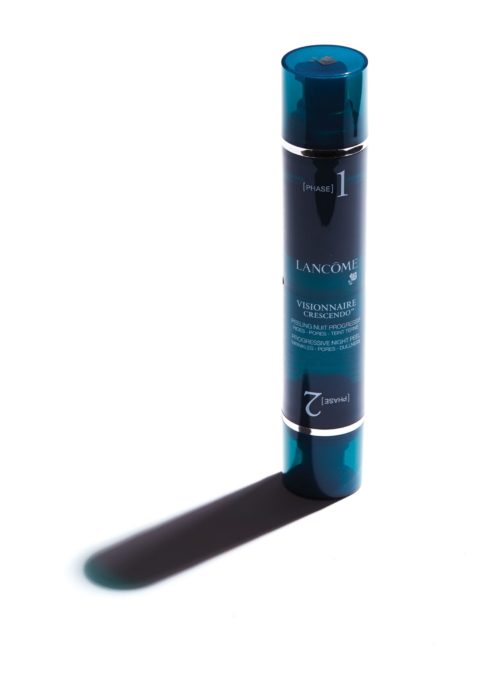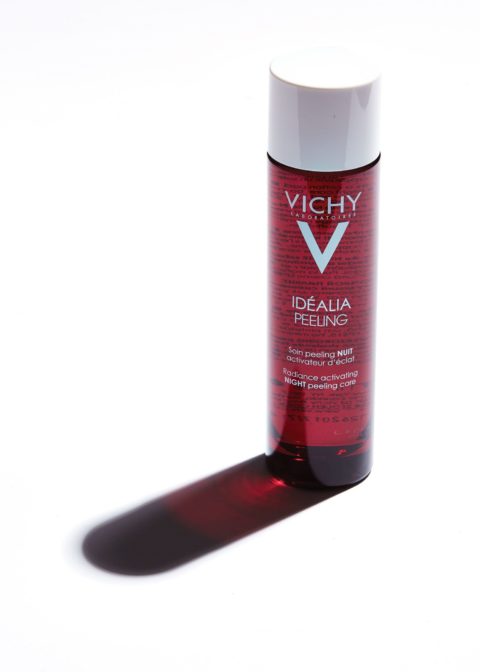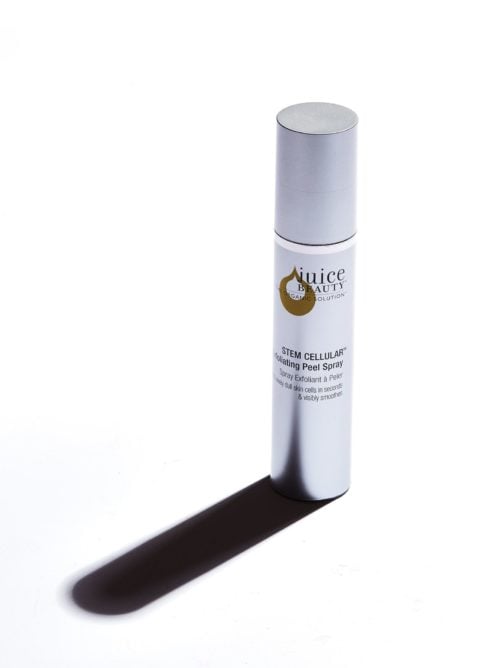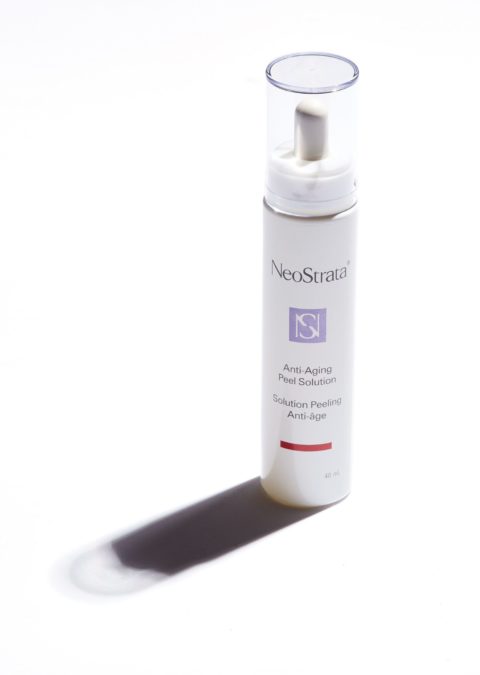Are Chemical Peels the Best Solution for a Radiant Complexion?
In a world obsessed with clean beauty, exfoliation really delivers, scrubbing away dirt and debris from pores and polishing the surface of skin to a shine. But lately the ritual has become somewhat controversial. Last December, two women filed a $5 million class action lawsuit against Unilever, the company behind the bestselling St. Ives Apricot Scrub, claiming that the gritty formula—which has been around since the ’80s and contains crushed walnut shells—can damage your skin and cause micro-tears that could let in bacteria. They also argue that calling the product “dermatologist-tested” is misleading, as many dermatologists do not endorse it.
While the outcome of the legal case is still TBD, there’s no debating the fact that exfoliation can cause irritation if you do it a bit too enthusiastically or use a harsh formula. Chemical peels, inspired by those used in dermatologists’ offices, certainly aren’t new, but a new wave of them—infused with a blend of purifying acids and enzymes instead of abrasive particles—is emerging as an alternative for refining your skin without disrupting your complexion. This next generation of at-home peels combines a curated mix of acids with calming, non-irritating ingredients, says Jordana Mattioli, a medical aesthetician at CompleteSkinMD in New York City. The result is a potent peel that’s also safe. Afterwards, “your skin will instantly appear softer and smoother,” she says.
Instant, of course, is what everyone wants, says Karen Grant, a beauty trend analyst with The NPD Group, who sees the rise in demand for peels as a natural extension of the masking phenomenon. “Similar to the masking trend, peels dial into consumers’ need to get skin that looks camera-ready,” she says. “The generation before was concerned with ‘How do I care for my skin?’ But today it’s like ‘I need immediate results.’” The instant gratification of a peel, says Grant, is that it lifts layers of dead skin and “makes your pores look better, so when you put on makeup, it’s like you’re wearing no makeup.”
These liquid cocktails also deliver what Grant calls “experiential engagement,” which translates into “they are fun to use and put on.” “We’re looking for feel-good experiences that create a visible effect, like ‘Oh, look, I have this on!’” she says. “Surprising textures, colour changes—all of these elements come into play.” The Body Shop’s Drops of Youth Youth Liquid Peel delivers that sensorial appeal with a hybrid gel-to-peel formula that contains hydrating babassu oil and soft “fibre clusters.” After massaging the solution onto your face for 20 seconds, you’ll notice little clumps of residual stuff (i.e., pore junk) that are very satisfying to rinse off with water. Or consider Juice Beauty’s Stem Cellular Exfoliating Peel Spray—a plant-based mist loaded with alpha-hydroxy acids (AHAs), aloe vera and cucumber extract that you spritz onto your face, let absorb and then rub in using your hands or a soft washcloth. Interactive? Definitely. Effective? Yes, but Mattioli points out that both options are mild.
If you want to up the intensity, however, there’s no shortage of ultra-potent peels—in fact, this segment of the market has been blowing up, says Grant. “The sensibility of having access to something that used to be available only in an aesthetician’s or a dermatologist’s office is definitely becoming standard,” she says. “It’s about giving power back to the consumer and letting her do more than she could in the past.” Dr. Joshua Zeichner, a Manhattan-based dermatologist, agrees. “Millennials in particular are looking for professional-strength treatments that they can administer themselves,” he says. Witness the viral success of Drunk Elephant’s T.L.C. Sukari Babyfacial, which has consistently sold out online since it launched this winter. Spiked with a hefty 25 per cent AHA (more than double the amount in the brand’s T.L.C. night serum), the peel gets rid of buildup right down to the lining of your pores.
If that sounds too intense, Lancôme’s Visionnaire Crescendo is like a trainer for your skin—it has two different-strength formulas in one bottle to gradually ramp up your tolerance for exfoliation. The first phase contains a 5 per cent blend of AHA and quinoa extract, designed to be used for 14 consecutive nights to stimulate cellular turnover. Then flip the bottle and use the second (more potent) phase, a 10 per cent mix of salicylic acid and glycolic acid, for another 14 nights to even out your tone and tighten your complexion. Or try Vichy’s Idéalia Peeling Radiance Activating Night Peeling Care. This no-rinse formula with 4 per cent glycolic acid can be worn like a sleeping mask. “It’s good for younger skin types just starting acid exfoliants or possibly someone who is on prescription retinoids [which also slough the skin] and should only use low percentages of acids,” says Mattioli.
Once you test-drive such high-performance options, why stop at just exfoliating? In Mattioli’s clinic, she works with about 30 different combinations of acids to spot treat everything from fine lines to hyperpigmentation. While you can’t rival that set-up in your bathroom, “there are absolutely more customized options [at home] now than ever before,” she says. NeoStrata, for example, recently released two new riffs on its classic Skin Renewal Peel Solution. The Anti-Aging Peel Solution is formulated with “peptides and a hyaluronic booster for a plumping effect that works to reduce wrinkles and improve elasticity,” says Nick Ngo, the brand’s lead chemist. The Brightening Peel Solution, meanwhile, has “2 per cent GenoWhite, a lightening peptide used to correct dark spots and enhance brightness.” New technology, he explains, is what’s driving this made-to-measure approach. “The introduction of enzymes that work synergistically with acids in a balanced formulation enhanced with tailored peptides is the advancement since our original peel,” he says. And you get all this, he adds, “with less risk of irritation and no recovery time.”
But let’s be clear: No recovery time doesn’t mean you should peel like there’s no tomorrow. You still need to do a patch test first and follow good skincare measures. Post-application, “your skin will be a little more sensitive to the sun,” says Ngo, which explains why many peels are best applied at night and require that you step up your SPF protection efforts. And unlike with masks, which can be doubled up on your skin, Mattioli cautions against layering multiple peels in a single session. “But it’s possible to use one in the morning and another at night,” she says, as long as you have your dermatologist’s sign-off. In other words: make this ritual dermatologist-tested.
The post Are Chemical Peels the Best Solution for a Radiant Complexion? appeared first on FASHION Magazine.




